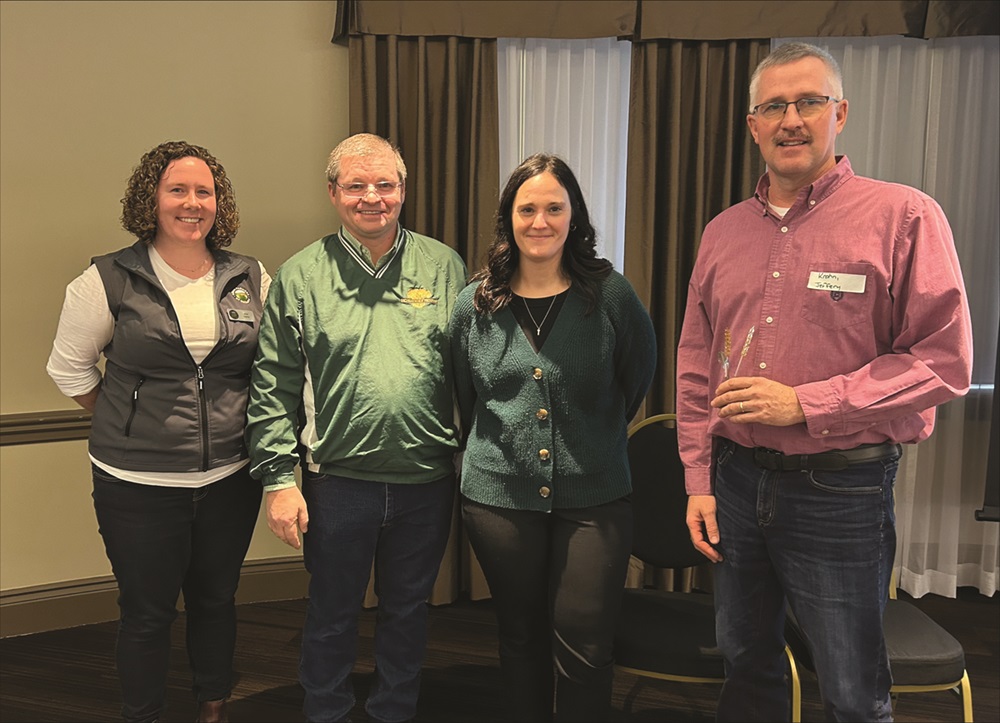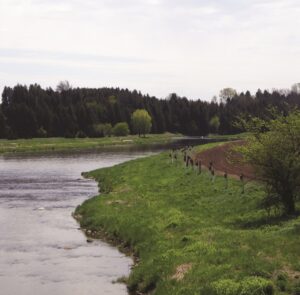Winning with wheat
LESSONS LEARNED FROM THE GREAT LAKES YEN

OVER THE PAST THREE YEARS, THE GREAT LAKES YIELD ENHANCEMENT NETWORK (YEN) participants have posted some pretty impressive results. In 2023, the highest yield award went to Jeff Cook, from London, Ontario, with a yield of 173.4 bushels/acre, with Nick Suwyn of Wayland, Michigan, coming up close behind with 171.4 bushels/acre, and Jeff Krohn, from Elkton Michigan, placing third with a yield of 167.1 bushels/acres.
IT’S NOT JUST ABOUT YIELD
The Great Lakes YEN is more than just a yield competition: it’s a way to connect farmers from both sides of the border and help them understand more about their crops and the yields they are achieving — taking a comprehensive approach to learning what agronomic practices may lead to advancing wheat management for the highest economic returns in future fields.
Fields are benchmarked, evaluating how an individual field compares to the whole group of Great Lakes YEN entrants through agronomic and environmental data collected throughout the season on items such as rainfall, sunlight, soil baseline nutrient levels, and inputs such as nutrients and crop protection products, the number of applications, and timing of applications.
The Great Lakes YEN is also able to model the crop’s yield potential for each participant in a program year by looking at the plant’s development stages, recording the basic resources (light, temperature, and water) available, and calculating the crop’s success in capturing these resources.
Using this yield potential model, three 2023 YEN participants came out on top — Mark Davis, from Napanee, Ontario, achieved 117 per cent of yield potential; Krohn and Wallace Loewen from Middleton, Michigan, came in second and third with 107 per cent of yield potential.
THREE YEARS OF SUCCESS
Jeff Krohn, a Great Lakes YEN participant since its 2021 pilot season, landed in the top three of both the top yield and achieving the highest yield potential in 2023 — and has taken home prizes in each of the three years he’s participated. In 2022, he took home gold in both the yield competition (165.9 bushels/acre) and the potential yield category (88 per cent of potential yield). In 2021, he was awarded top honours in the potential yield category — achieving 73.7 per cent of potential that year.
Krohn’s success is not a surprise to Dennis Pennington, Michigan State University wheat extension specialist and member of the Great Lakes YEN steering committee. Taking what he’s learned from the Great Lakes YEN program, Krohn has improved his yields and potential yield percentages year-over-year.
“Jeff is a top-notch farmer,” says Pennington. “He pays attention to details and is constantly testing new equipment and practices on his farm. Jeff is always looking for new ways to overcome production hurdles and find new ways to be more productive and sustainable.”
ACROSS LAKE HURON
Krohn’s farm is located in the “thumb” of Michigan, in Huron County — directly across the lake from Huron County, Ontario. The opportunity to network with and learn from some of the best wheat growers in the region was a big reason why Krohn initially wanted to get involved in the Great Lakes YEN program.
“I see some of the best growers who grow wheat are in the YEN program; obviously, we grow pretty good wheat, but I wanted to grow better wheat,” says Krohn. “The collaboration with all of the other growers and the meetings with the growers, the summer tours that they have, are the best ways to talk and collaborate with the other good wheat growers in the same geographical areas.”
Topping the leaderboard has not been one of his goals, he says.
“I don’t see it as a yield competition,” he says. “It’s a contest to grow better wheat. To me, it’s about figuring out what is the next five bushels, what will get me to the next ten bushels.”
After three years, he continues to learn more about his own wheat management and sees tremendous value in the reports that the YEN program provides.
“The data that is in the YEN results, there is just so much there; you could spend days and days analyzing the data to pick out a few things.”
Krohn says that there is not one specific thing that he has gleaned from his YEN reports that has ultimately changed the management of his wheat crop, but rather, it has reinforced that the things he is doing are leading him in the right direction.
“Nitrogen is a big driver in building biomass,” he says. “When I see other YEN participants using 180 to 200 pounds of nitrogen, and they are not even close to being top yields — that verifies that using 135 to 140 pounds of nitrogen, that makes me feel better, that it’s the right rate.”
Looking at the other high performers in the YEN program, Krohn says he sees many similarities in their management practices.
“Cover crops, lower seeding rate, narrower rows, T1 and T2 application of fungicides, those are things that Jeff [Cook] and I are doing that are similar,” says Krohn. “That helps to verify that I’m on the right track.”
PLANTING DATE MATTERS
In addition to wheat, Krohn and his wife Stephanie grow a rotation of corn, soybeans, dry beans, and alfalfa on 2,000 acres in partnership with his sons, Brandon and Nathan and his wife Amber, and their son Westin — the fifth, sixth, and seventh generations to operate the family farm.
Including dry beans in his rotation ahead of wheat is one of the keys to Krohn’s success, according to Joanna Follings, cereals specialist with the Ontario Ministry of Agriculture, Food and Rural Affairs and member of the Great Lakes YEN steering committee.
“Dry beans come off the field one to two weeks earlier than soybeans,” says Follings. “We know that early planting is critical to getting those high wheat yields.”
BEST ADVICE
When asked what his best advice is for someone who wants to grow higher-yielding wheat, Krohn points to seeding rate.
“Lower your seeding rate,” says Krohn. “I see too many guys going with high seeding rates. Plant early, and lower your seeding rate.” •
























